A 54kg girl on ice skates on a frozen lake pulls with a constant force on all light rope that is tied to a 41 kg sled. The sled is initially 22m from the girl, and both the sled and the girl start from rest. Neglecting friction, determine the distance the girl travels to the point where she meets the sled.
The correct Answer is:[9.5 N]
Step by step video, text & image solution for A 54kg girl on ice skates on a frozen lake pulls with a constant force on all light rope that is tied to a 41 kg sled. The sled is initially 22m from the girl, and both the sled and the girl start from rest. Neglecting friction, determine the distance the girl travels to the point where she meets the sled. by Physics experts to help you in doubts & scoring excellent marks in Class 11 exams.
Updated on:21/07/2023Topper's Solved these Questions
- NEWTONS LAWS OF MOTIONBOOK - PHYSICS GALAXY - ASHISH ARORACHAPTER - NEWTONS LAWS OF MOTIONEXERCISE - Advance MCQs
17 Videos
- LINEAR MOMENTUM & ITS CONSERVATIONBOOK - PHYSICS GALAXY - ASHISH ARORACHAPTER - LINEAR MOMENTUM & ITS CONSERVATIONEXERCISE - exercise 1.3
3 Videos
- RIGID BODIES AND ROTATIONAL MOTIONBOOK - PHYSICS GALAXY - ASHISH ARORACHAPTER - RIGID BODIES AND ROTATIONAL MOTIONEXERCISE - Unsolved Numerical
63 Videos
Similar Questions
A 45.0kg girl is standing on plank that has a mass of 150kg. The plank, originally at rest, is free to slide on a frozen lake, which is a flat, frictionless supporting surface. The girl begins to walk alnong the plank at a constant speed of 1.50m/s relative to the plank. (a) What is her speed relative to the ice surface? (b) What is the speed of the plank relative to the ice surface?
View SolutionA boy with a mass of 35 kg and a sled with a mass of 6.5 kg are on the frictionless ice of a frozen lake, 12 m apart but connected by a rope of negligible mass. The boy exerts a horizontal 4.2 N force on the rope. What are the acceleration magnitudes of (a) the sled and (b) the boy ? ( c ) How far from the boy's initial position do they meet ?
View Solution
Knowledge Check
A rope is strecthed between two boats at rest. A sailor in the first boat pulls the rope with a constant force of 100N. First boat with the sailor has mass of 250kg. Whereas the mass of second boat is double of this mass. If the initial distance between the boats was 100m. The time taken for two boats to meet each other is (neglect water resistance between boats and water)
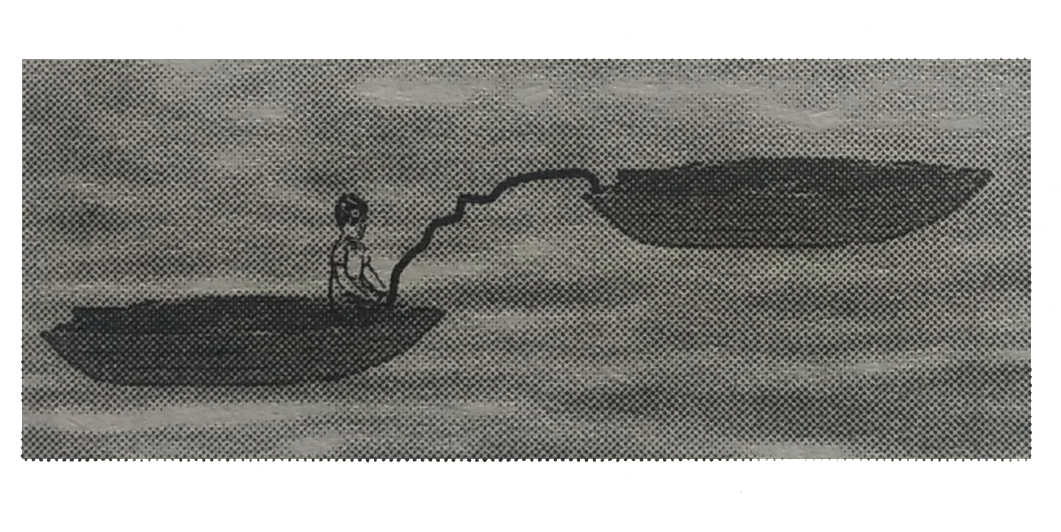 A13.8sB18.3sC3.18sD31.8s
A13.8sB18.3sC3.18sD31.8sOn a horizontal frictionless frozen lake, a girl (36 kg) and a box (9 kg) are connected to each other by means of a rope. Initially they are 20 m apart. The girl exerts a horizontal force on the box, pulling it towards her. How far has the girl traveled when she meets the box >
A10 mBSince there is no friction, the girl will not moveC16 mD4mA boy pulls a sled of mass 5.0 kg with a rope that makes a 60.0∘ angle with respect to the horizontal surface of a frozen pond. The boy pulls on the rope with a force of 10.0 N, and the sled moves with constant velocity. What is the coefficient of friction between the sled and the ice?
A0.09B0.18C0.24D0.12
In the figure shown, the mass of the trolley is 100 kg and it can move without friction on the horizontal floor. It length is 12 cm. The mass of the girl is 50 kg. Friction exists between is 12 m. The mass of the girl is 50 kg. Friction exists between the shoes of the girl and the trolley's upper surface, with μ=1/3, The girl can run with a maximum speed =9m/s on the surface of the trolley, with respect to the surface =9m/s on the surface of thr trolley, with respect to the surface. At t=0 the girlm starts running from left to the right. The trolley was initially stationary. (g=10m/s2)
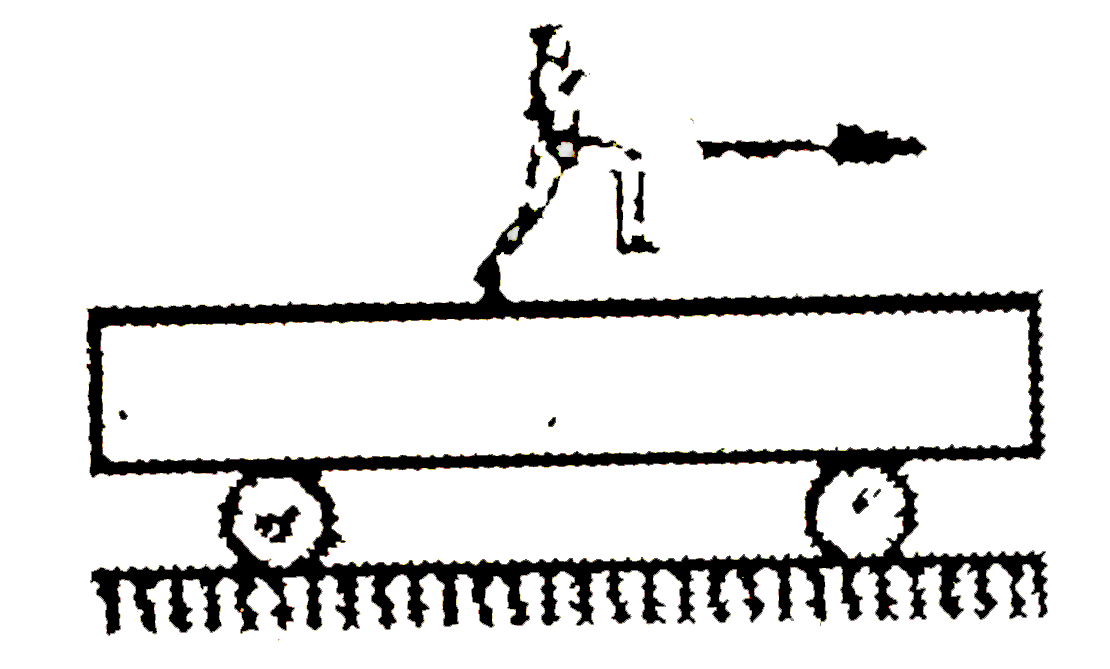
The displacement of the trolley by the time the girl reaches the right end of the trolley is :
View SolutionIn the figure shown, the mass of the trolley is 100 kg and it can move without friction on the horizontal floor. It length is 12 cm. The mass of the girl is 50 kg. Friction exists between is 12 m. The mass of the girl is 50 kg. Friction exists between the shoes of the girl and the trolley's upper surface, with μ=1/3, The girl can run with a maximum speed =9m/s on the surface of the trolley, with respect to the surface =9m/s on the surface of thr trolley, with respect to the surface. At t=0 the girlm starts running from left to the right. The trolley was initially stationary. (g=10m/s2)
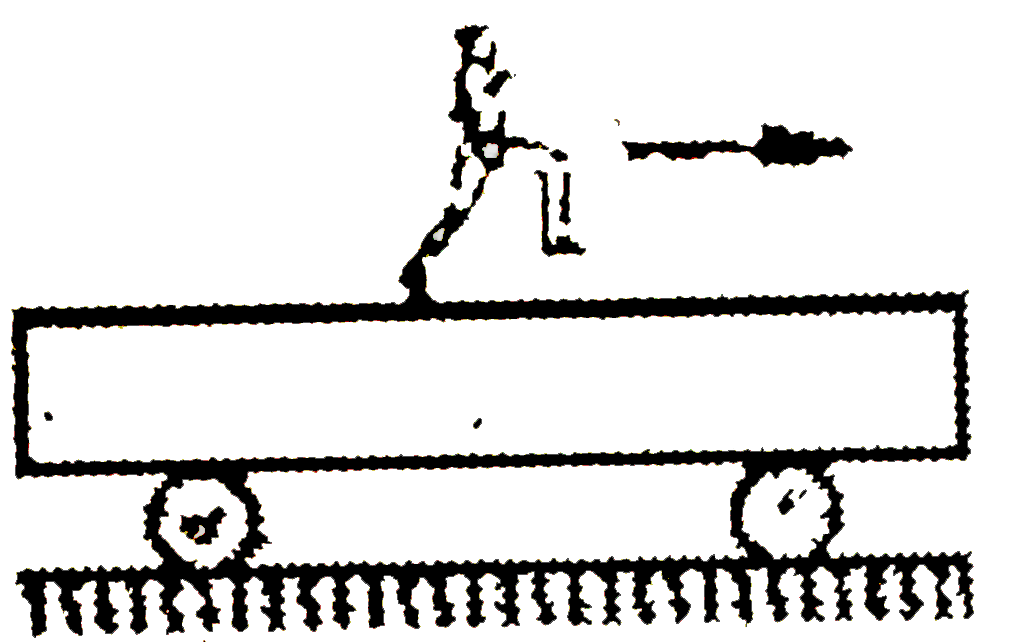
At a certain moment when the girl was accelerating, the earth frame accelerating of the trolley is found to be 1m/s2. At this moment, the friction force between the girl's shoes and the trolley's surface is :
View SolutionIn the figure shown, the mass of the trolley is 100 kg and it can move without friction on the horizontal floor. It length is 12 cm. The mass of the girl is 50 kg. Friction exists between is 12 m. The mass of the girl is 50 kg. Friction exists between the shoes of the girl and the trolley's upper surface, with μ=1/3, The girl can run with a maximum speed =9m/s on the surface of the trolley, with respect to the surface =9m/s on the surface of thr trolley, with respect to the surface. At t=0 the girlm starts running from left to the right. The trolley was initially stationary. (g=10m/s2)
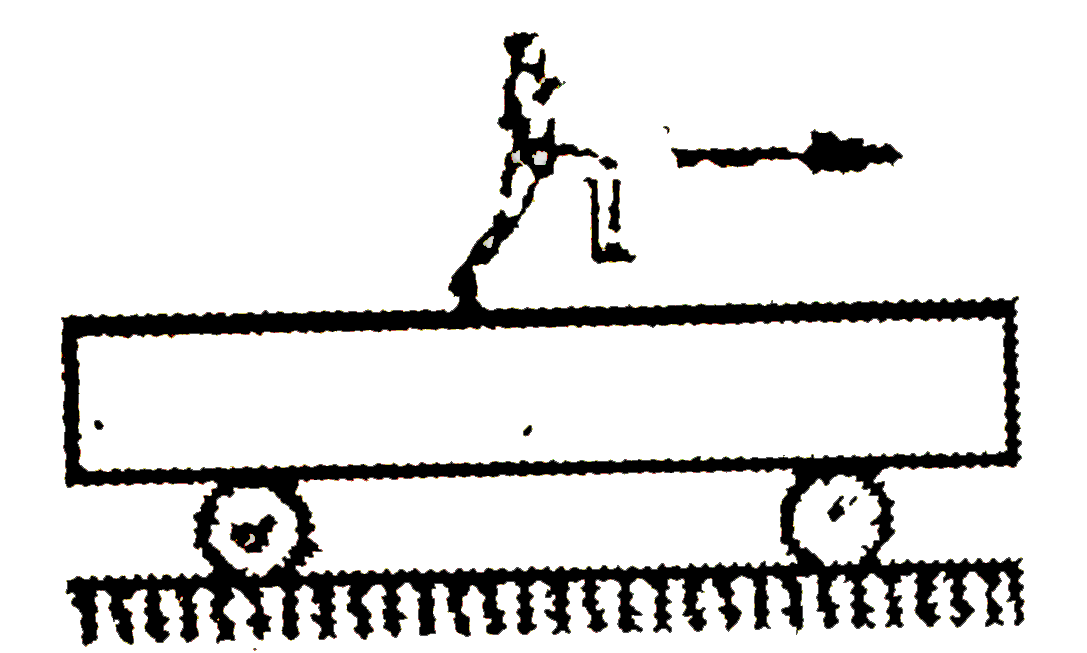
Suppose the girl accelerates slowly, at a constant rate, and acquires the relative speed of 9m/s only when it reaches the right end of the trolley, then what must be the earth frame acceleration of the girl ?
View SolutionIn the figure shown, the mass of the trolley is 100 kg and it can move without friction on the horizontal floor. It length is 12 cm. The mass of the girl is 50 kg. Friction exists between is 12 m. The mass of the girl is 50 kg. Friction exists between the shoes of the girl and the trolley's upper surface, with μ=1/3, The girl can run with a maximum speed =9m/s on the surface of the trolley, with respect to the surface =9m/s on the surface of thr trolley, with respect to the surface. At t=0 the girlm starts running from left to the right. The trolley was initially stationary. (g=10m/s2)
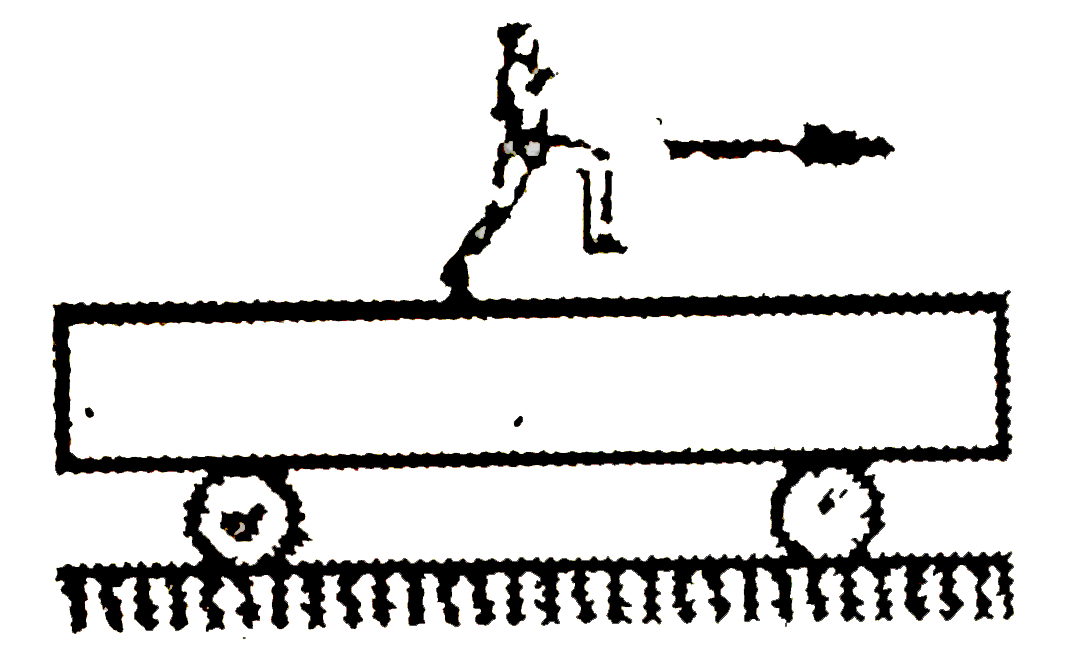
The total kinetic energy of system (trolley + girl) at the instant the girl acquires her maximum relative speed with respect to trolley, is :
View SolutionIn the figure shown, the mass of the trolley is 100 kg and it can move without friction on the horizontal floor. It length is 12 cm. The mass of the girl is 50 kg. Friction exists between is 12 m. The mass of the girl is 50 kg. Friction exists between the shoes of the girl and the trolley's upper surface, with μ=1/3, The girl can run with a maximum speed =9m/s on the surface of the trolley, with respect to the surface =9m/s on the surface of thr trolley, with respect to the surface. At t=0 the girlm starts running from left to the right. The trolley was initially stationary. (g=10m/s2)
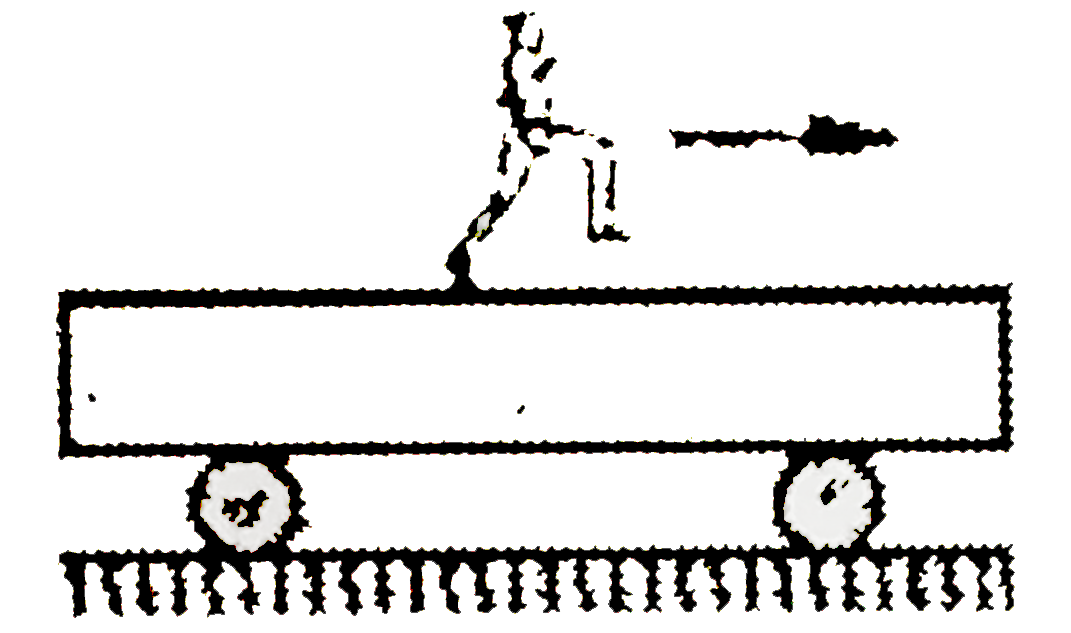
The minimum time in which the girl can stop from 9 m/s relative speed, to zero relative speed, without causing her shoes to slip is :
View Solution
